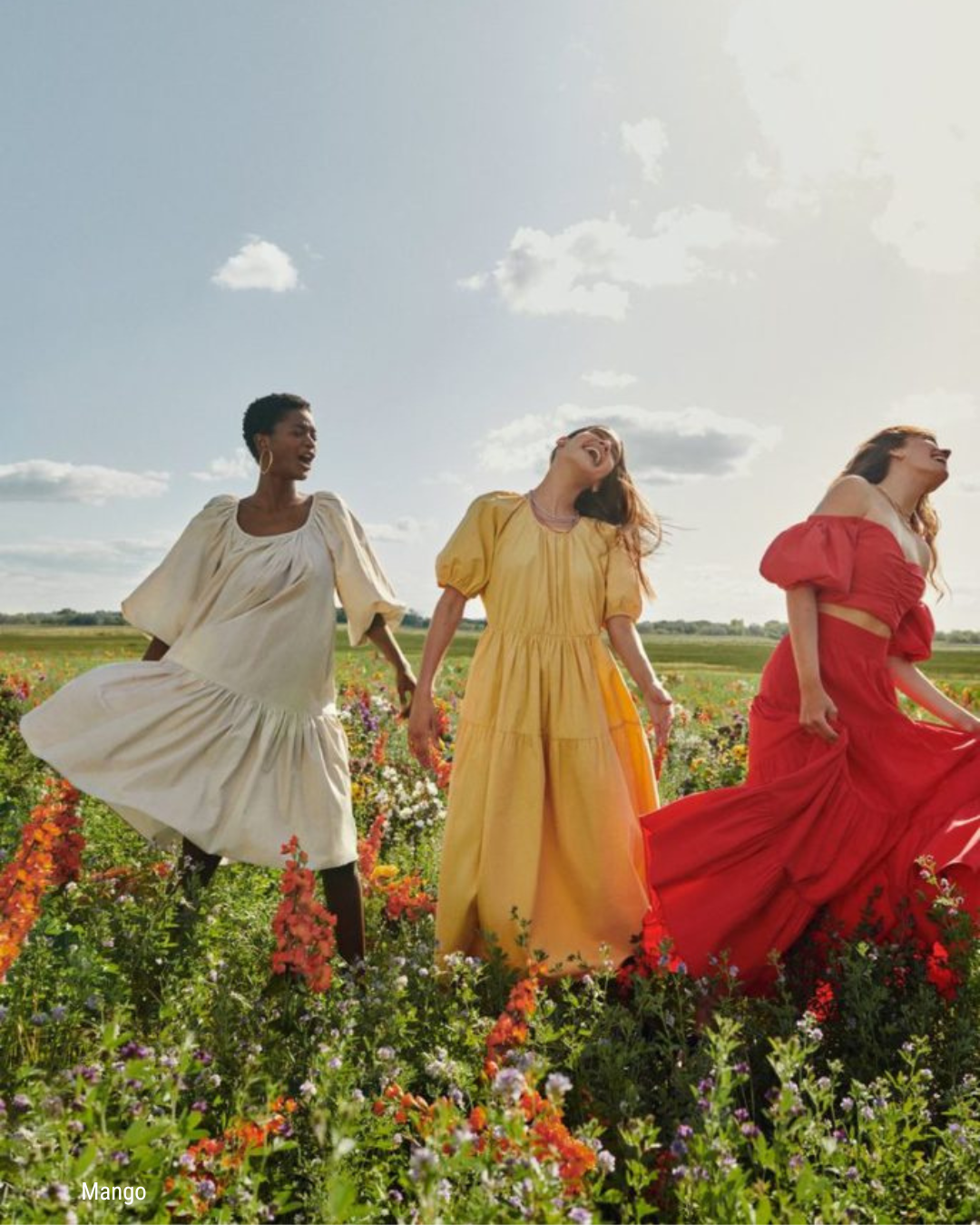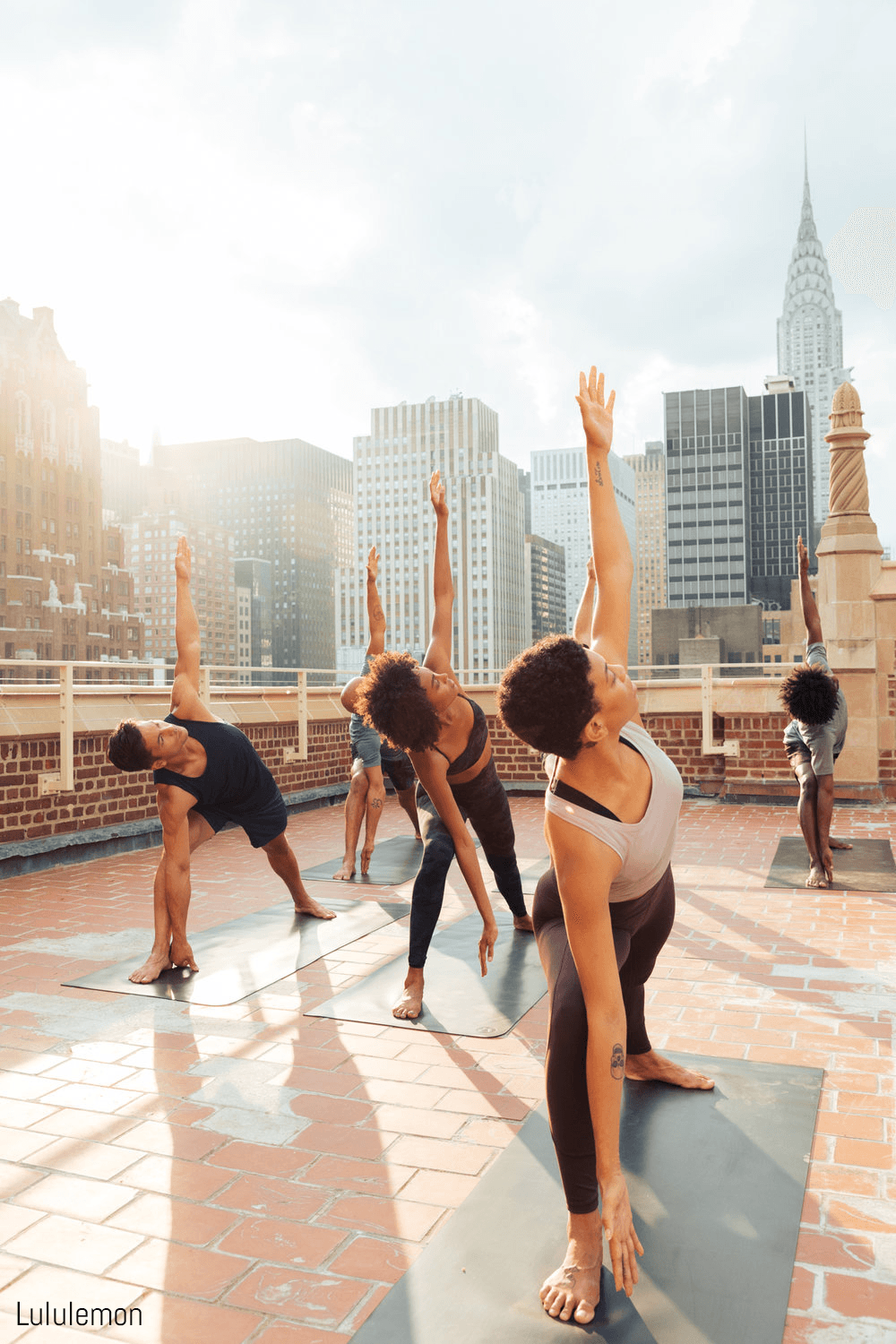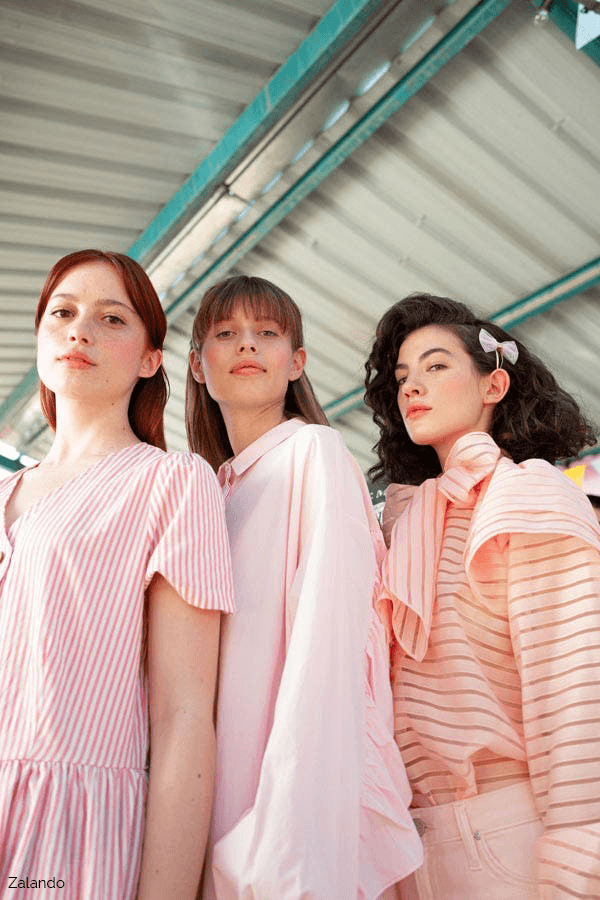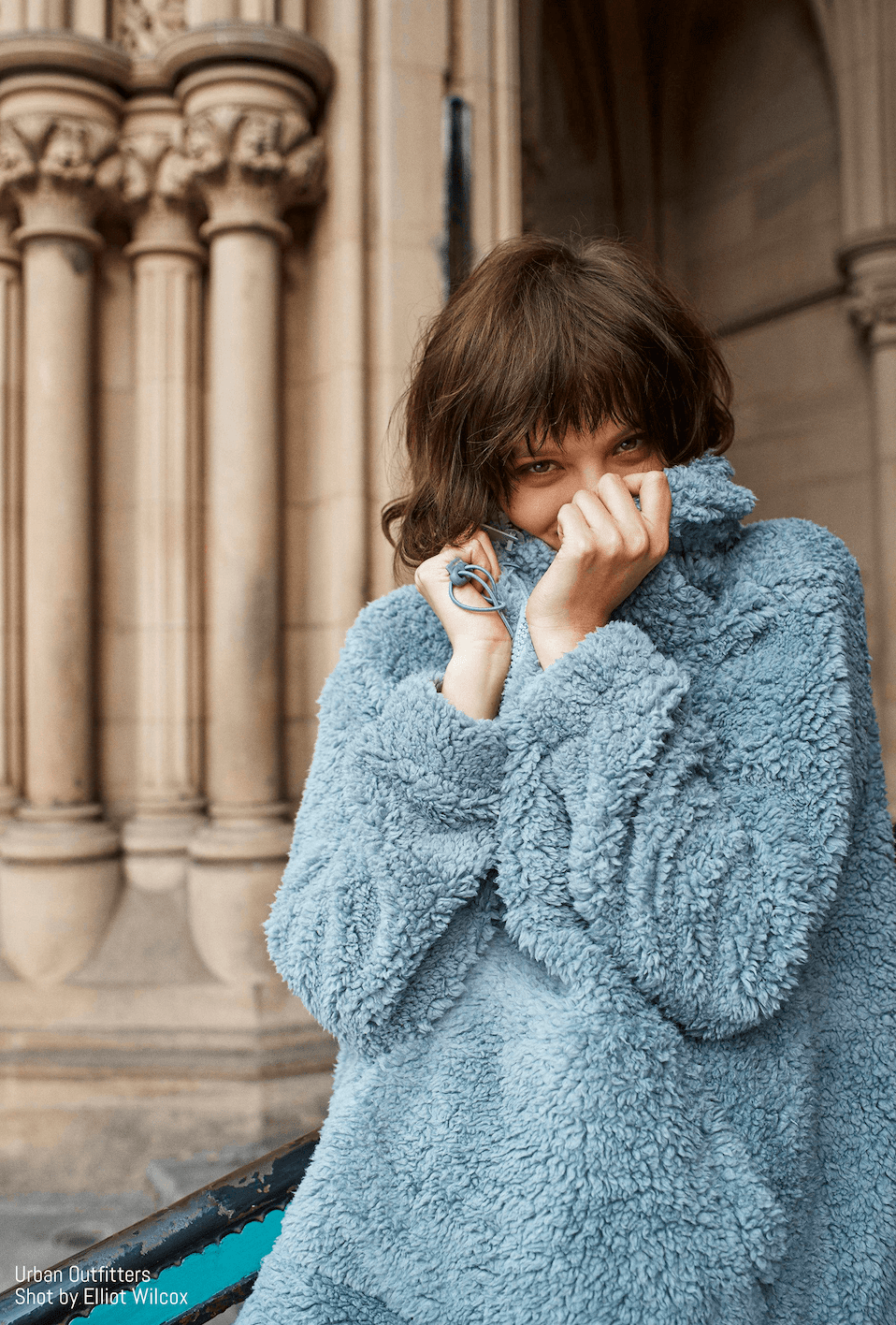Mango’s digital transformation
Last year, Mango invested over 50 million euros in the digital transformation of the company, a strategy devised to prioritize the customer every step of the way. This approach came on the heels of a highly successful year: online sales grew by over 25%, and overall sales were the highest in the company’s history. Mango progressed by leaps and bounds in a variety of aspects in 2019 thanks to Toni Ruiz’s penchant for innovation, particularly technologically-speaking, from production logistics to social media strategies.
One major change in particular is in production. Previously, the company ran their operations out of many warehouses in multiple locations, with longer shipping times and less centralized manufacturing. Now, Mango has one major global distribution center in Spain which can ship out clothing in less than four hours. This centralized logistics center combines all of the brand’s latest digital innovations, from automation to tracking IDs. In coordination with other centers in Spain, Mango can even fulfill e-commerce orders in parallel to in-store inventory from the same production cycle if needed.
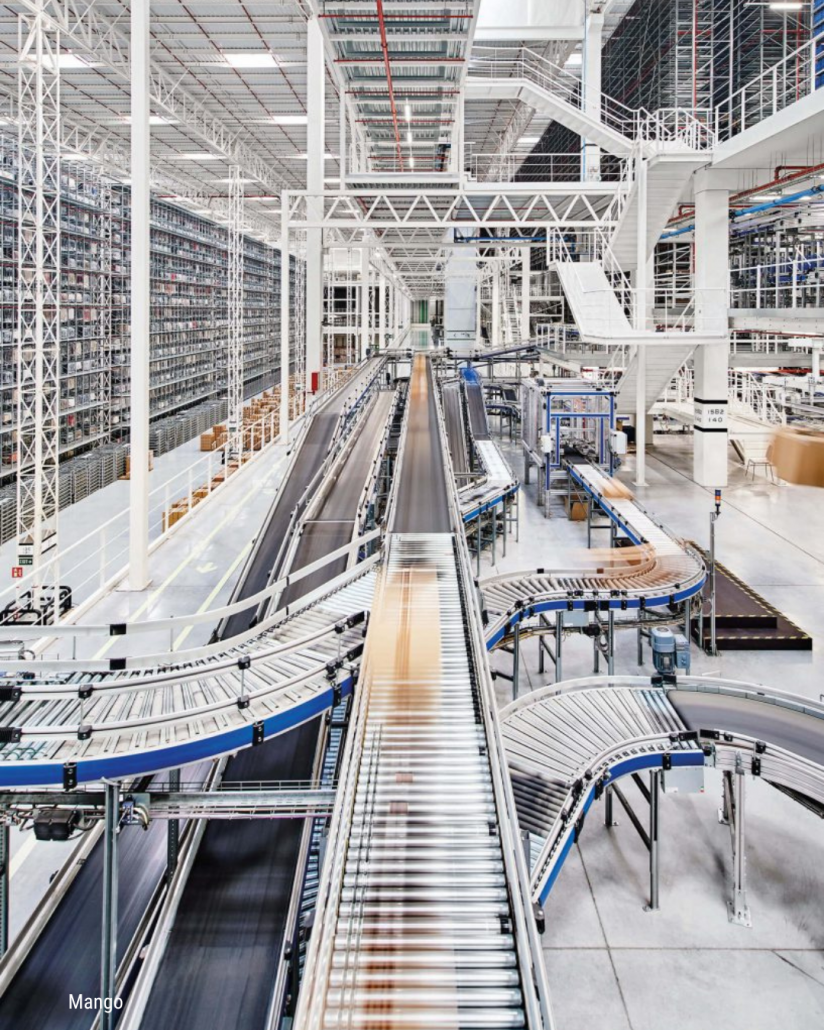
Furthermore, the company’s move to go forward with their RFID project, or tracking IDs in layman’s terms, has proven even more successful than predicted. Having been tested in a number of company stores across Spain, these tracking IDs allow for Mango to have greater visibility and traceability of their stocks. This way, overstock and undesirable assortment can be more easily avoided.
Another digitally-driven approach has been the brand’s reworking of their online presence. They have invested significantly in improving the customer experience on their site and apps, both on desktop and mobile. Their decision to implement a new omnichannel approach has improved engagement significantly, and shopping is made not only possible but streamlined no matter which channel the customer is interacting with. Shopping feels more personalized and conscious, such is the case of the brand’s Mango likes you loyalty program, a system in which customers can exchange likes for purchases to receive discounts and experiences in return. The program is expected to reach 4 million participants when it takes off in more countries in Europe. They also launched a campaign dubbed Your choices make us, in which the consumer votes via Instagram story for their favorite accessory or article of clothing, contributing to collection planning in a modern, interactive fashion.
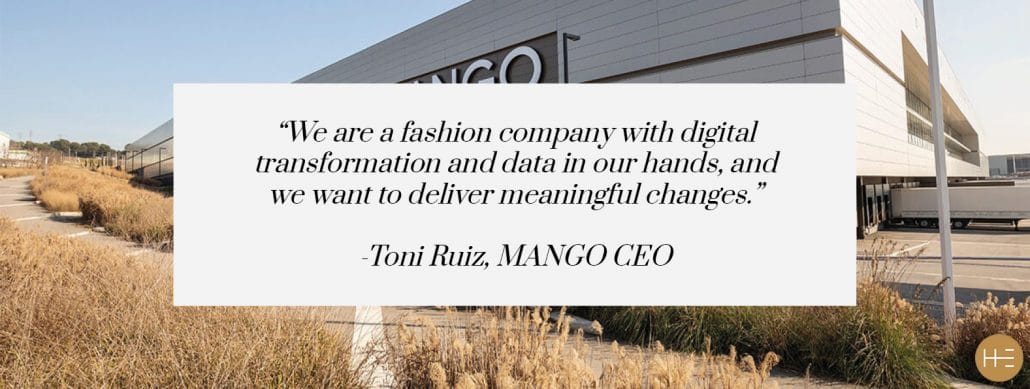
Evidently, Mango’s digital transformation has come in various shapes and sizes, and all are part of a greater move to put the customer at the center of the brand’s decisions. After three years of stagnant sales online and in-store, Mango’s revenue began to chin up again at the end of 2018 following Toni Ruiz’s new, digital strategies. He confessed to Vogue Business, “We are a fashion company with digital transformation and data in our hands, and we want to deliver meaningful changes.” The future lies in the digital, and Mango’s success depends upon its ability to move as quickly as tech innovation and consumer evolution.
Listening to the customer: A push for sustainability
Today, e-commerce counts for about 25% of the Mango’s total revenue. These numbers ride on the coattails of 2019, during which the Mango webpage received more than 600 million visits, 80% of which were conducted on mobile. As previously mentioned, Ruiz credits this success to Mango’s new approach to collection planning: more localized production and faster turnover. Instead of replenishing sold-out inventory, the brand replaces it with new looks to avoid overstock and to keep their collection dynamic. However, this is taken from Zara’s current strategy, and it’s no secret that the fast fashion giant is the one to beat. Mango’s Spanish concurrent releases 500 new designs every seven days.
This approach of microcollections, while lucrative, is difficult to harmonize with Mango’s public move toward sustainability. Last year, the company joined the Fashion Pact, a global coalition with the goal of supporting eco-consciousness in the fashion and textile industries. They also joined the Sustainable Apparel Coalition, a similar organization fighting for environmental improvements in textile supply chains. Luckily, sustainability is a good space to live in right now, particularly because consumers of fashion are placing ethics and environmentalism increasingly high on their list of values.
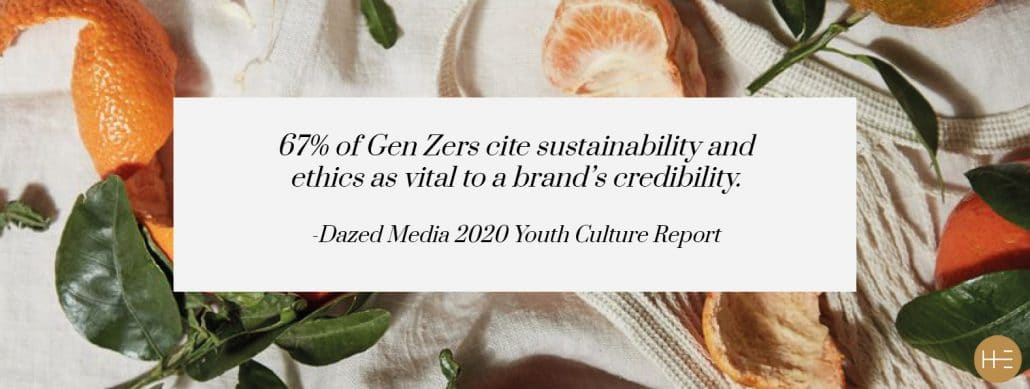
In Dazed Media’s 2020 Report on the future of youth culture, for instance, a reported 67% of Gen Zers cited sustainability and ethics as vital to a brand’s credibility. A whopping 85% claimed that they would stop buying from a brand if they were to find out the brand’s practices were ostensibly unethical. A good example of such a business model is Promod, a French clothing brand, who marries customer input with sustainability: one of their main initiatives has been to create an in-store drop-off for used clothing for customers to then purchase as they please. The initiative has been well-received, and other brands including H&M have even jumped on the bandwagon.
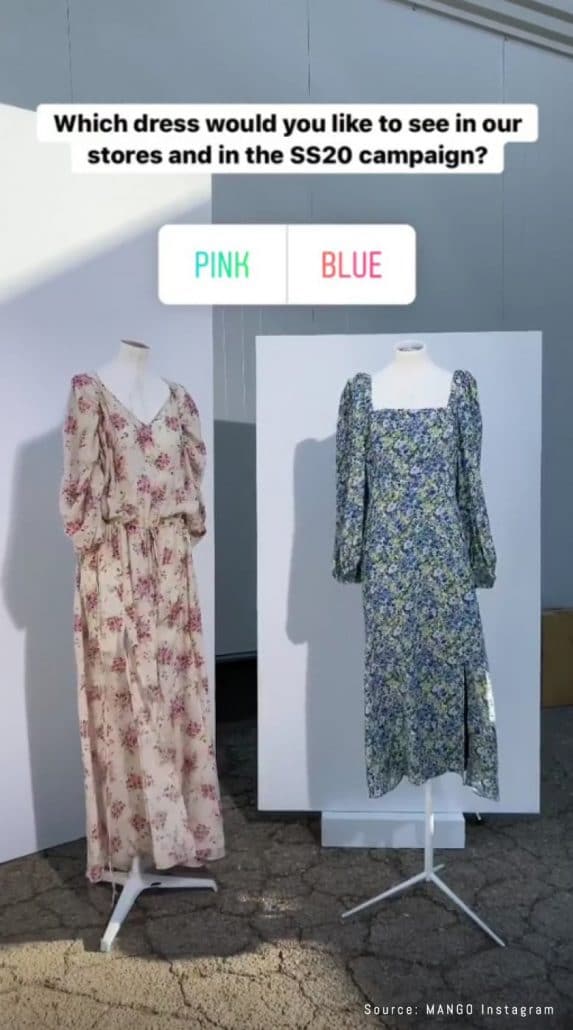
As the consumer would have it, transparency is key. Mango’s moves thus far to include the customer in collection decisions, such as their Your choices make us initiative, are a good step toward greener fashion. But then there’s the question of how exactly to manage inventory and plan collections in a sustainable way, all while listening to the consumer and staying on top of fast-moving trends.
So what if Mango could know what their customers wanted, even before the customers themselves to avoid overstock and waste?
Building a collection thanks to trend forecasting
Collections have been picking up the pace for years now, but in the wake of Covid, there’s been a reordering of the collection calendar, and not only fast fashion brands. Gucci recently announced their transition to two shows per year instead of their previous five in a move to reduce waste and slow down production in fashion, for instance. But microcollections don’t have to be so vilified if done right: Mango’s strategy to replace rather than replenish is already a positive step toward reduced apparel waste. That said, this strategy depends entirely upon the accuracy of the collection assortment. Cue trend forecasting.
Trend forecasting is the act of predicting fashion trends including colors, fabrics, silhouettes, patterns, styles, and more. The source of the data required to make such predictions varies between trend forecasting companies, as does the methodology. Some draw from runways, some from street style, others from past sales data, and still others from social media. In today’s market, social media is the keystone to accurate forecasting, as this is often where trends are born and phased out. Influencers, trending hashtags, brand campaigns: trends propagate in a variety of different ways, the trick is knowing where to look depending upon one’s brand identity and audience.
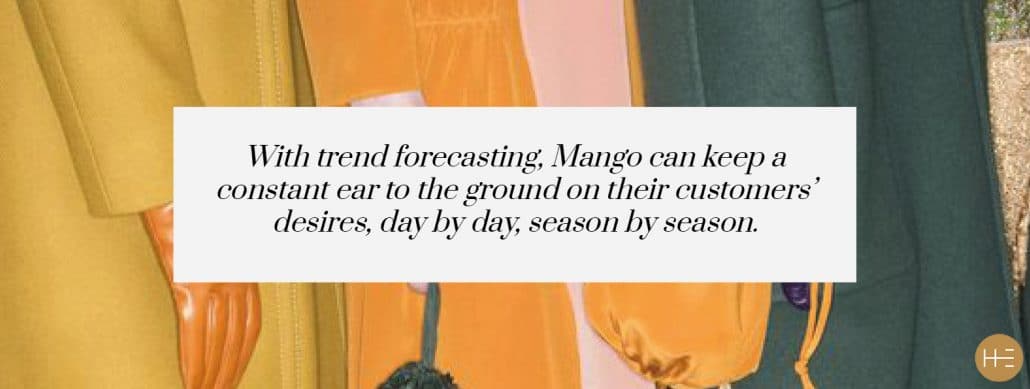
Heuritech’s methodology in particular uses artificial intelligence technology to analyze over 3 million shared images per day from social media, in particular Instagram and Weibo. This in-house technology detects over 2,000 attributes from color to texture to shape in order to determine both market trends and product trends, as such it can identify a Chanel Boy Bag just the same as it can identify houndstooth print. When evoking words like “pattern” and “fabric” perhaps the most evident application of this technology is for design teams. But Heuritech’s technology goes beyond that.
Heuritech aligns not only fashion designers but merchandisers, planners, and buyers to produce collections that are equal parts desirable and eco-conscious. Design teams at Mango can use trend prediction to back their intuition: they keep a close eye on the market as it is, so trends backed by hard numbers give the green or red light for their design planning. For womenswear in Europe Spring 2021, for instance, Heuritech’s analysis asserts that ditsy print will be up by +46% compared to last year.
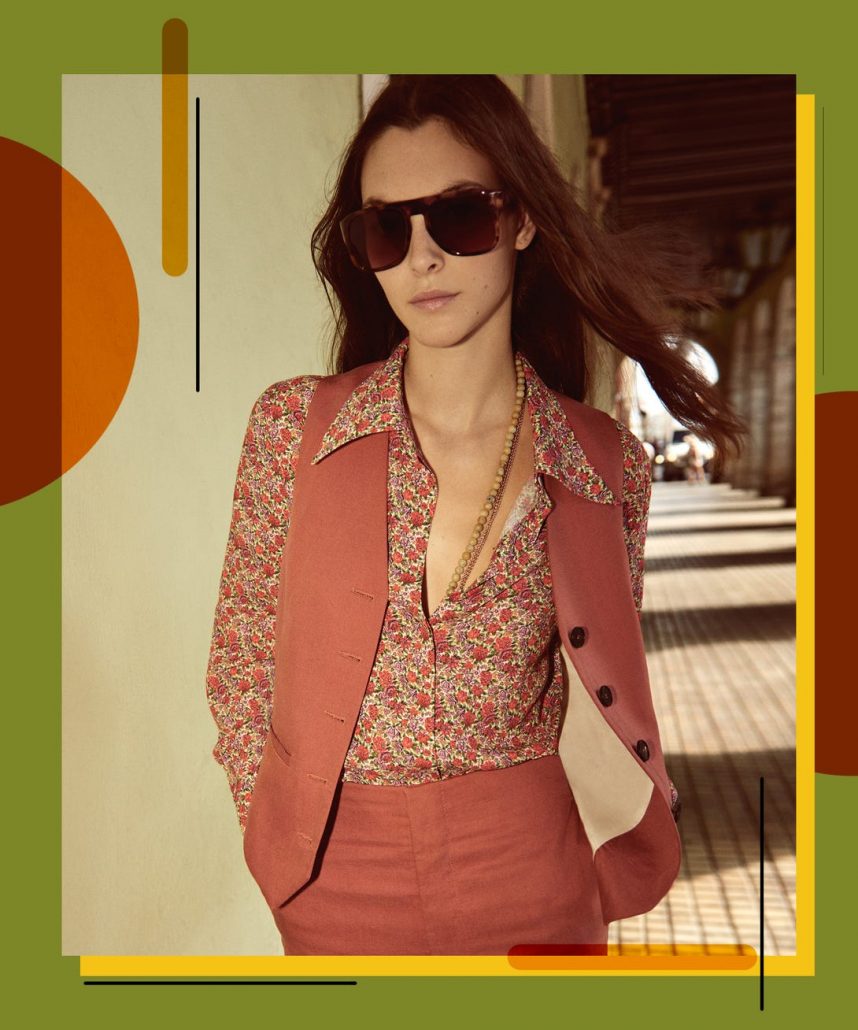
This sort of data can help guide designers for upcoming collections so as to not miscalculate their audience’s desires. And with the language of data, in turn, merchandising and buying teams are able to communicate more effectively with design teams who at times operate in two different worlds. Quantitative trend data allows planners, merchandisers, and buyers to know exactly when to launch a collection, for which audience, and in what assortment and quantity. If knitwear, for instance, is predicted to peak among mainstream consumers in Winter 2020 but fade out completely by Winter 2021, these teams can plan accordingly. This quantitative foresight via trend prediction is a way for Mango’s planners, merchandisers, and buyers to avoid a number of common fashion industry hiccups and achieve the following:
- Avoid overstock
- Streamlining production
- Optimizing turnover
- Understanding one’s customer desires
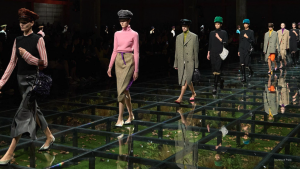
And to nourish Mango’s data-driven spirit, communication and digital teams are just as implicated to be aligned with the other teams once collections are ready to be debuted. The benefits of trend forecasting bubble up from the designers, planners, and merchandisers to be ultimately diffused by these communication and digital teams. The medium through which this functions is of course social media. Presence and engagement on social channels are vital for a brand’s success, particularly if one’s audience is largely millennial and Gen Z, as is the case of Mango. Mango has already understood the value of social channels as seen in their direct-to-consumer approach for input in their collection planning, so imagine the impact of real-time, daily data from social media on the brand’s future.
Particularly now, in a time where Covid-19 has led e-commerce and online ubiquity to pick up the slack for and even reorder in-store and physical engagement, data is a means to reduce incertitude for fashion brands. With trend forecasting, Mango can keep a constant ear to the ground on their customers’ desires, day by day, season by season.
